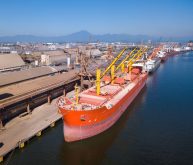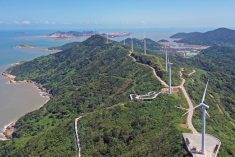LONDON, U.K. (Reuters) — A Cargill chartered dry bulk ship is on its first voyage since being fitted with special sails, aiming to study how harnessing wind power can cut emissions and energy use in the shipping sector.
The maritime industry, which accounts for nearly three percent of global carbon dioxide emissions, is under pressure from investors and environmental groups to accelerate decarbonization. So, the sector is exploring different technologies, including ammonia and methanol, in efforts to move away from bunker fuel.
Cargill, one of the world’s biggest ship charterers, has been exploring wind-assisted propulsion as one cleaner energy option. Wind was a common way of propelling ships before the switch to steam and diesel engines but is now mostly used for smaller vessels.
Read Also

Crop quality looks good this year across Prairies
Crop quality looks real good this year, with the exception of durum.
“It is risk taking. There is no guarantee … that the economics are going to work,” said Jan Dieleman, president of Cargill’s ocean transportation division.
“But it is up to us to show the industry what is possible and hopefully get some more people confident around this technology.”
The five-year-old Pyxis Ocean has been retrofitted with WindWings, large wing sails measuring up to 37.5 metres in height that are fitted to the deck of the cargo ship.
Dieleman said Cargill hopes to recoup the costs through fuel savings.
“If we are not going to get any real surprises, we are definitely going to scale this. The question is a little bit how and when,” he said referring to other ships that are likely to be newbuilds.
Pyxis Ocean will sail from Singapore and head to Brazil and is likely to transport a cargo of grain to Denmark, Dieleman said.
The vessel is then likely to remain in the north Atlantic area to maximize wind use.
BAR Technologies, which has designed boats for the America’s Cup, developed the sails, which were built by Norway’s Yara Marine Technologies.

















